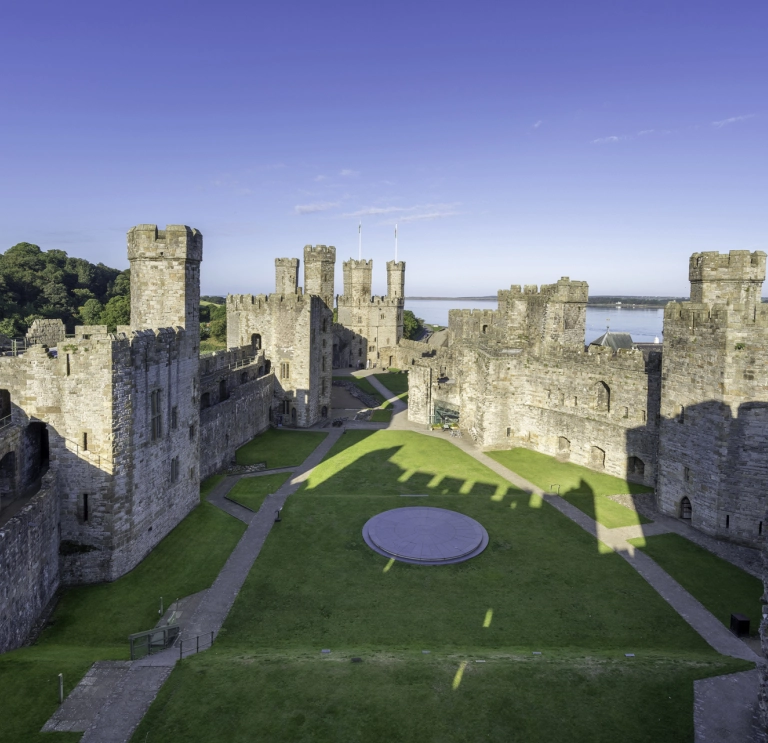Show of power
You’re a powerful English king in the prime of life and you want to build a bit of boulder bling to show the Welsh you mean business. What do you do? If you’re Edward I, you commission an Iron Ring of castles – a medieval warning to toe the line.
Edward built Castell Caernarfon (Caernarfon Castle) in the 1280s, at roughly the same time as two of his other blockbusters, Harlech and Conwy. The cost of this show of might was colossal – a good 90 per cent of his nation’s annual income. He was a cultured, wealthy ruler and he wanted to be sure everyone knew it.

Castell Caernarfon's (Caernarfon Castle's) master architecture
He didn’t just hire any old team of builders – he brought in Jacques de Saint-Georges d’Espéranche from Savoy near Lake Geneva, the master military architect of the age. The sturdy walls and octagonal towers of Castell Caernarfon (Caernarfon Castle) were decorated with bands of different coloured limestone and sandstone, the interior boasted murals by the artist who also decorated Westminster Hall, and there was glass in the windows. The castle also featured state-of-the-art comforts such as bathrooms, toilets and running water.
But its main function was to boldly impress and intimidate, striking a hammer blow into the hearts of any locals who dared question his authority. The main King’s Gate was designed to be defended by a drawbridge and no less than six portcullisses, plus arrow loops, spy holes and murder holes, through which deadly substances and objects could be hurled down onto attackers.

Still a menace
Today, this English-built castle is one of Wales’ most prized architectural treasures. As you approach, it’s easy to imagine how menacing it must have appeared in medieval times. Commanding the mouth of the River Seiont, it dominates the small town of Caernarfon, now a web of 17th and 18th century streets enclosed by medieval stone walls.
Once inside, you can’t fail to be struck by the scale of the structure, much of which is intact. You’re free to roam around, admiring the view of Caernarfon from the lofty Eagle Tower, and clambering up and down spiral staircases to gaze down at the grassy central area where King Charles III was invested in 1969, when he was the Prince of Wales.
While you're there, discover the history of the military in the area. The Royal Welch Fusiliers Museum is housed in two of the castle's towers and tells the story of this famous Welsh regiment.



Accessibility at Castell Caernarfon (Caernarfon Castle)
It’s a challenge to make a medieval fortress accessible. However, the recently completed £4million project to improve the visitor experience includes a new lift, enabling step-free access to the viewing platform. Entry is free for wheelchair users and personal assistants. Visit the Castell Caernarfon (Caernarfon Castle) website for up to date information.


Celts and Romans
Caernarfon’s historic flavour continues out of town. The region, which has been inhabited since Celtic times, was grabbed by the Romans in the late 70s AD. On a hilltop east of the castle are the remains of a Roman fort, Segontium, founded around 77AD and designed to hold around a thousand infantrymen. It was occupied for around three centuries. The layout of many of the buildings can still be seen.


Further information
There's lots more to do around Caernarfon - search for activities, attractions and places to stay in the area.





